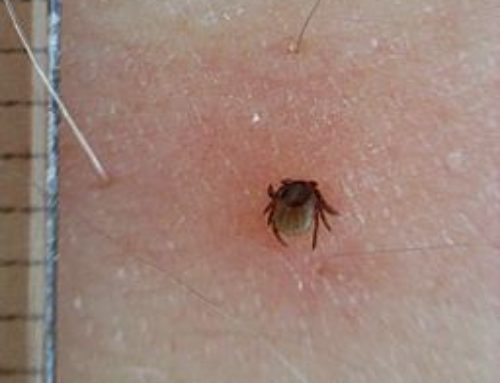The lone star tick (Amblyomma Americanum) which over the years has been referred to as, the northeastern water tick, or the turkey tick, is a type of tick that is indigenous to eastern United States and Mexico, that bites painlessly and it commonly often goes unnoticed, with it remaining attached to its host for as long as a week until it has become fully congested with the host blood.
Where is the Lone Star Tick Located in the US
It has been stated that the lone star tick is widely distributed across the East, Southeast and Midwest United States. It can be found in wooded areas and most especially second growth with thick underbrush, it can also be found in scrubs, hedge rows, meadow margins and marginal vegetation along rivers and streams, with the tick often using thick underbrush or high grass to attach itself to its unsuspecting host.

Map source: CDC
Expansion Trajectory
The lone star tick is widely distributed across the East, Southeast, and Midwest United States. However, the tick might establish other local populations outside of this range due to lone star tick expanding to other areas. And it has been reported that the tick has been expanding its range north and west out of the historic ranged depicted by the Centers for Disease Control and Prevention. These ticks are mostly found in second growth woodland habitats and that is due to its population of white-tailed deer and they can be classified as a means of expansion for the lone star tick.
Due to the re-introduction and increased populations of white-tailed deer in areas of the Easter United States, the ticks has been able to expand further to other locations through transportation while it is feeding on a white-tailed deer. Now another means of expansion of these ticks are wild turkey, and just like the white-tailed deer. In Midwestern states the lone star tick has been given the name the “turkey tick” due to its association with wild turkeys. The tick has also been reported outside of its range in Southern Ontario, including London, Wellington County and the Region of Waterloo.
Diseases Associated
The thing about the lone star tick is that it is not a factor which causes Lyme disease, that doesn’t mean the lone star tick is safe, you should know that although it doesn’t infect a person with Lyme disease but it does transmit bacteria that causes several types of illness such as Ehrlichiosis, Rickettsiosis, Tularemia, Theileria cervi and Southern Tick Associated Rash Illness (STARI).
Lone Star Tick as the Cause of Meat Allergy
A bite from a lone star tick can cause a person to develop alpha-gal meat allergy, which is a delayed response to red meat products. It is understood that poultry remains safe to eat, but in some cases even consumption of small amounts of milk can trigger symptoms. The allergic reactions to alpha-gal usually occurs between three to 6 hours after the red meat has been consumed which is different from other food allergy reactions and when that happens it makes difficult to identify what caused the reaction. The allergy can also cause hives and swelling. The allergy can also manifest as anaphylaxis, which is also life threatening allergic reaction that is characterized by construction of airways and a drop in your body’s blood pressure. The underlying cause of this meat allergy due to a lone star tick bit can be officially diagnosed through a blood test, and a prompt diagnosis and treatment is understood to help improve patient outcomes. Needless to say, should you be aware of a recent tick bite, and also be having some of the above symptoms, we’d recommend you see a local medical practitioner to have a better view on what is happening with your body, and further to properly diagnose and treat as appropriate.
Featured Image Source: CDC






Leave A Comment